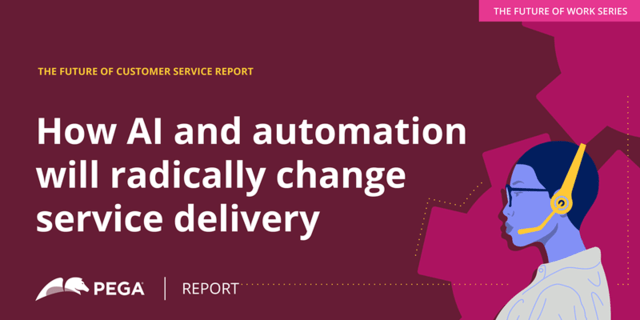Customer service delivery is transforming. We see it in the shift from call centers focused on the telephone to contact centers that field inquiries from all other relevant channels (e.g. web messaging, SMS, email, etc.). We see it in the technologies that consolidate desktop applications, guide customer service representatives (CSRs) through interactions using artificial intelligence (AI), and provide a complete view of every customer. And we see it in the customer, who expects fast, frictionless, satisfying outcomes.
But while some organizations are struggling to keep up with the change that’s already occurred, the industry has continued to evolve. Over the next five years, trends that have already begun will mature, while new trends will shape the way contact centers approach the customer, the agent, and their own strategic goals. Now is a crucial time to bring your organization up to speed with the tools, technologies, and tactics that shape the modern contact center – before the industry takes another great leap forward.
All channels lead to the customer
It’s easy to think of customer service trends as a chicken-or-egg question: Do the industry, organizations, and technologies drive consumer expectations? Or do customers naturally come to expect better, faster, more comprehensive service over time, forcing the industry to react? It’s a trick question – both things are true. The bottom line is that successful organizations today must be customer-centric. But counterintuitively, that doesn’t always mean obsessing over customer satisfaction metrics.
First, let’s consider what most customers want out of great service today and heading into tomorrow. Summed up in a word: Frictionless. Often that equates to self-service that actually works, or preemptive service that delivers a resolution before a problem even arises. Customers are increasingly intolerant of long queues, disjointed experiences, reactive service that comes too late, or generic service that doesn’t really speak to their specific needs. Contact centers will need to counter with AI-driven processes that can cut down wait times, centralize channels under one platform, predict customer needs, and deliver personalized next-best-actions on the spot.
As these techniques and preferences develop over the next few years, though, organizations will rightfully wonder what they’ll get back for their investment. A high net promoter score (NPS) is nice and all, but with great investments should come great returns. That’s why brands will start measuring customer service efforts in customer lifetime value (CLV) and other hard, financial metrics. Which brings us to the CSR.
Customer Service Rep 2.0
We've mentioned here before that the best service tools give agents superpowers. That’s going to be especially true over the next few years as organizations aim to capitalize on revenue opportunities originating in the contact center: CSRs may be measured in part on how well they convert an inquiry into an upsell. But CSRs should feel some comfort knowing that they won’t have to memorize scripts and cold-call prospects, like their peers in the sales organization. Instead, they’ll have AI-powered service tools at their disposal to identify those scenarios and navigate through them successfully.
In fact, there’s reason to believe that CSRs lives will get easier and less complicated, despite the potential for an expanded role. That’s because so much of their work will be automated by current and emerging technologies, so they can focus on the more rewarding, mentally stimulating parts of their role. When the service desktop can pull up personalized next best actions in the midst of a conversation, deliver a script or article for the CSR to read from, and capture relevant information on the fly, it’s a whole lot easier to focus on the customer and reacting to what they’re saying. That’s a win-win-win – for the agent, the customer, and the organization.
These developments may not sound utterly groundbreaking. That's because they are a natural continuation of trends, processes and capabilities that are already with us today. But that's why it's all the more important for organizations to keep an ear to the ground and stay abreast of changing industry norms. Before you know it, you're the frog and the water is already boiling.
Automate customer service, everywhere.
Automate and orchestrate every service journey, no matter where customers engage.
Learn moreWhy Pega?
We deliver innovative software that helps enterprises solve problems fast and transform for tomorrow.
Learn more
How AI and automation will radically change service delivery
Download this report to find out the key to keeping young customers happy, how trends manifest in different industries, why it’s important to offer always-on service, and how to do all of the above without losing a sense of empathy.

